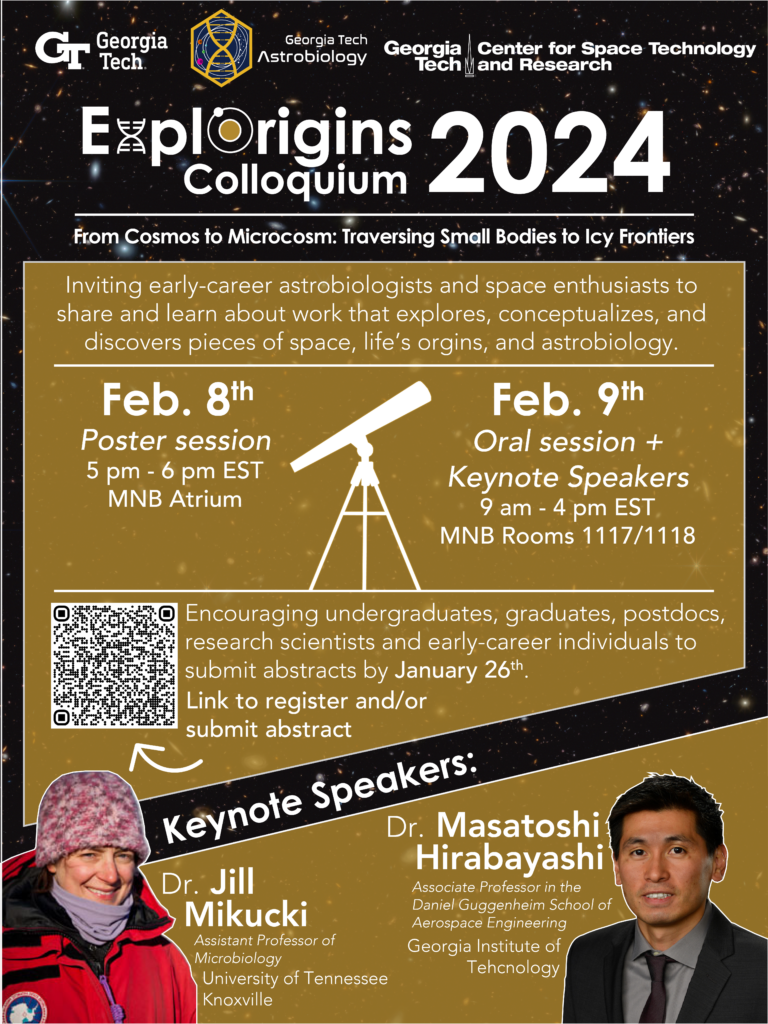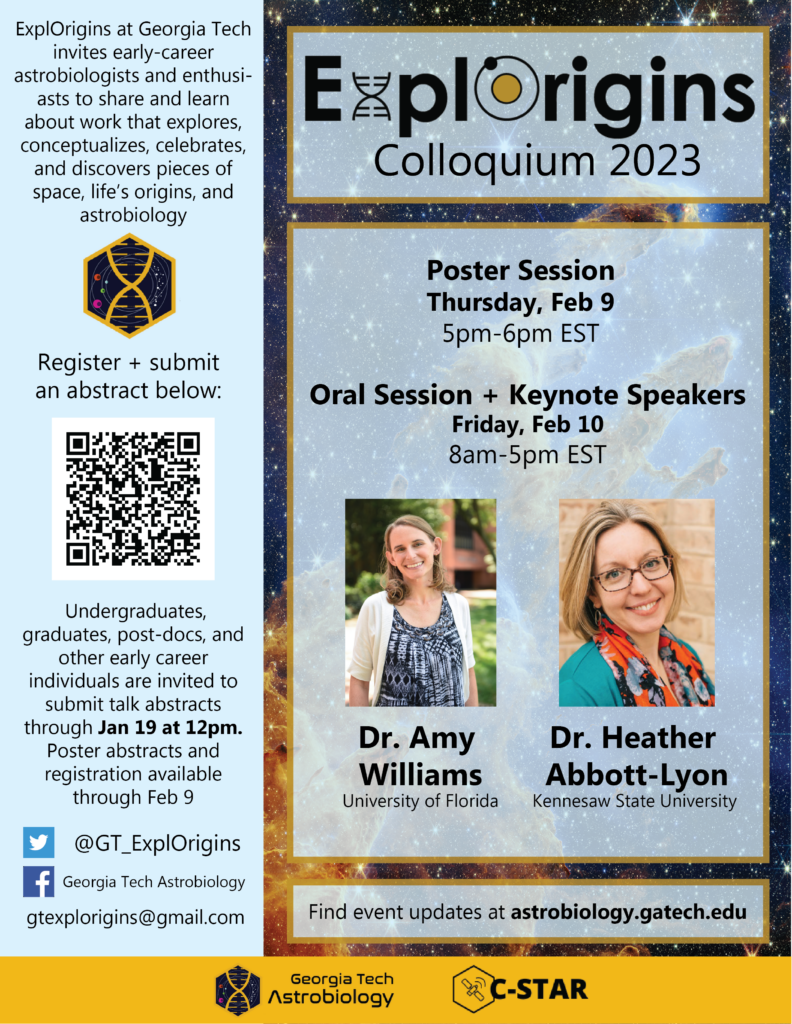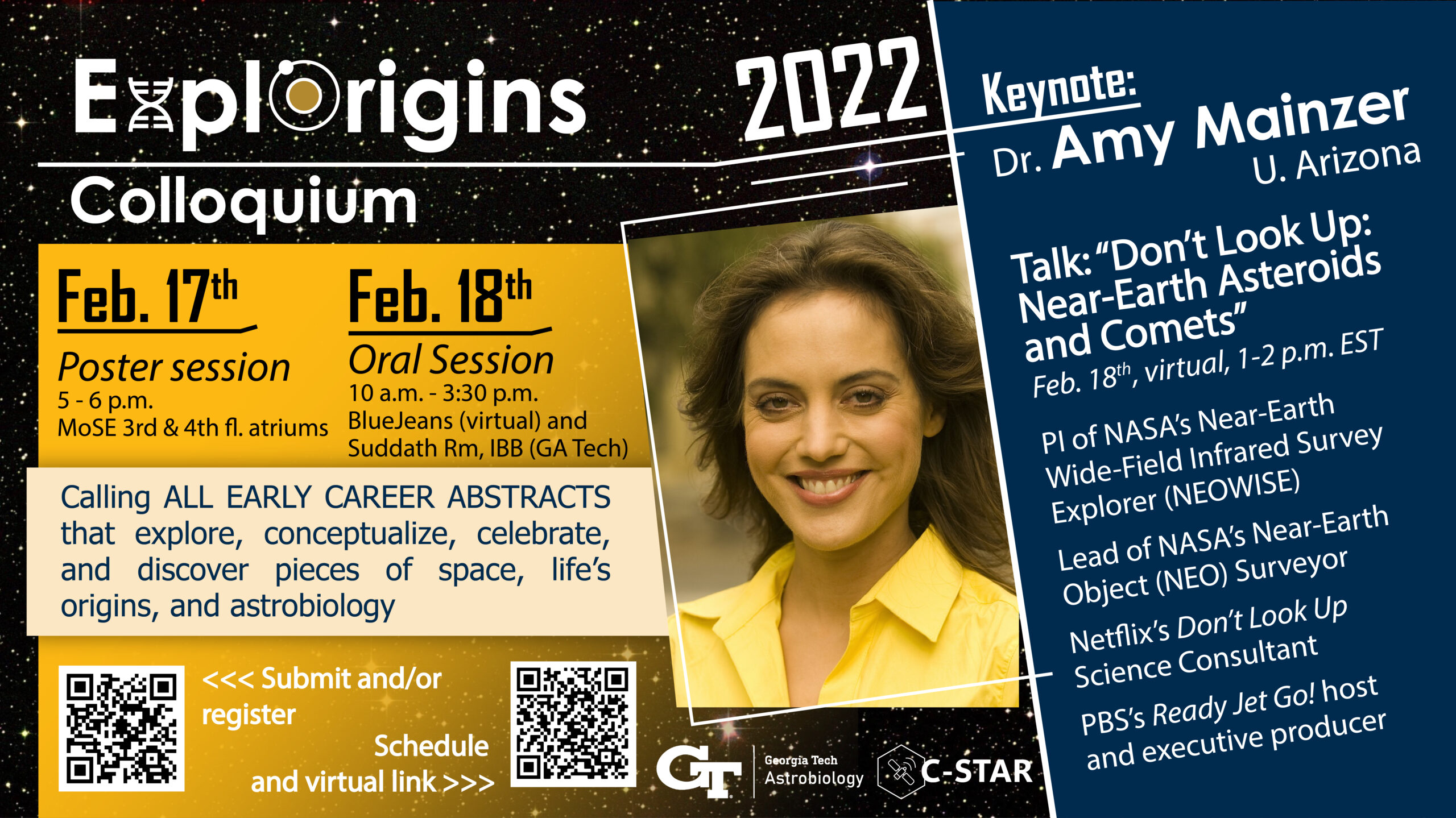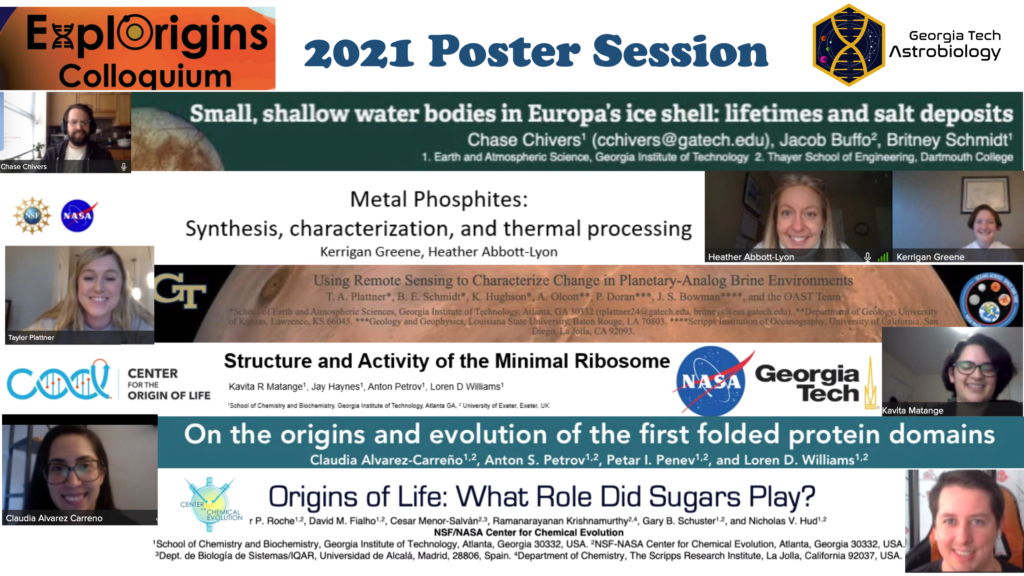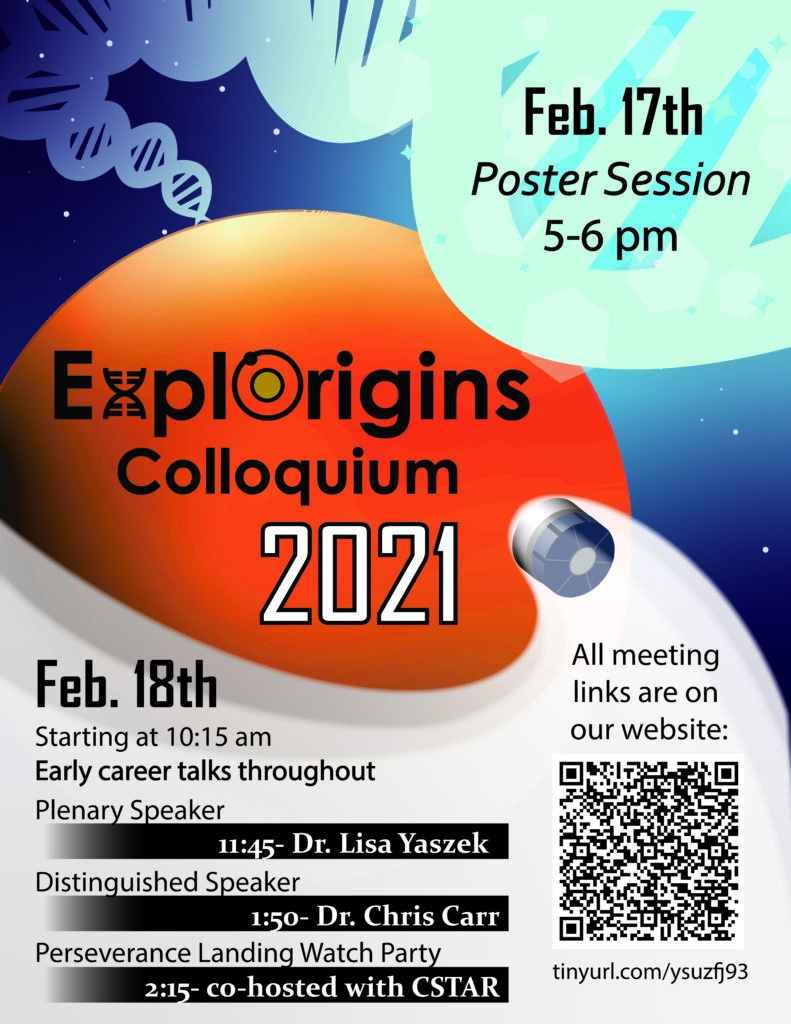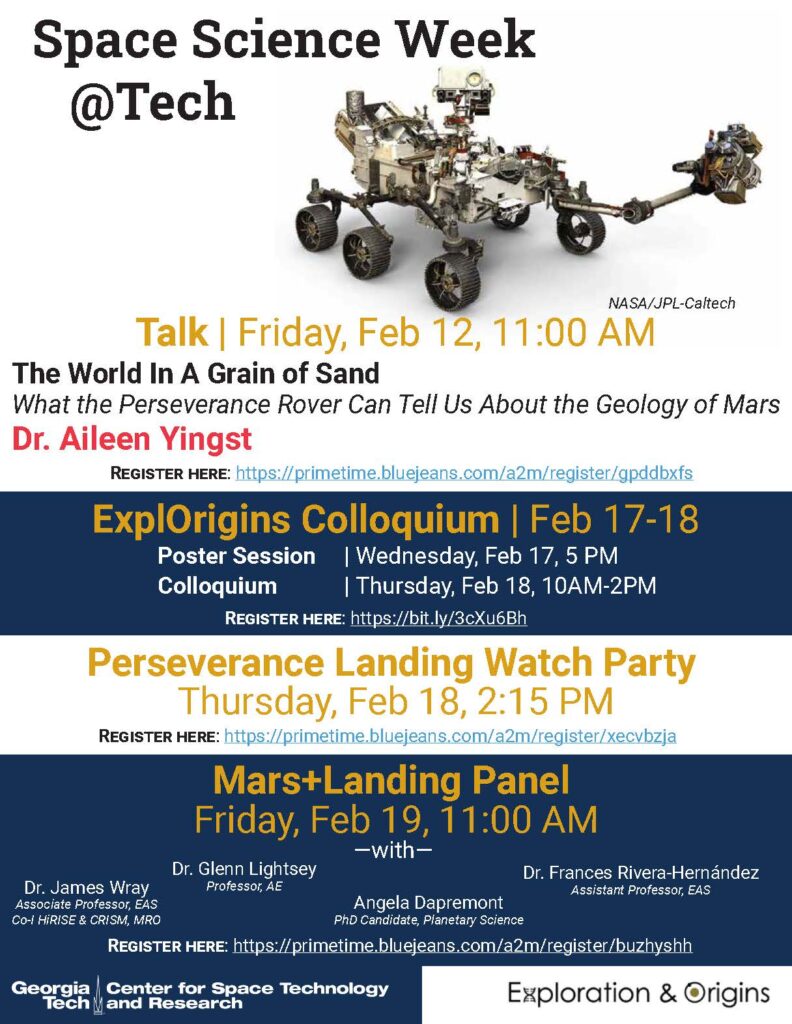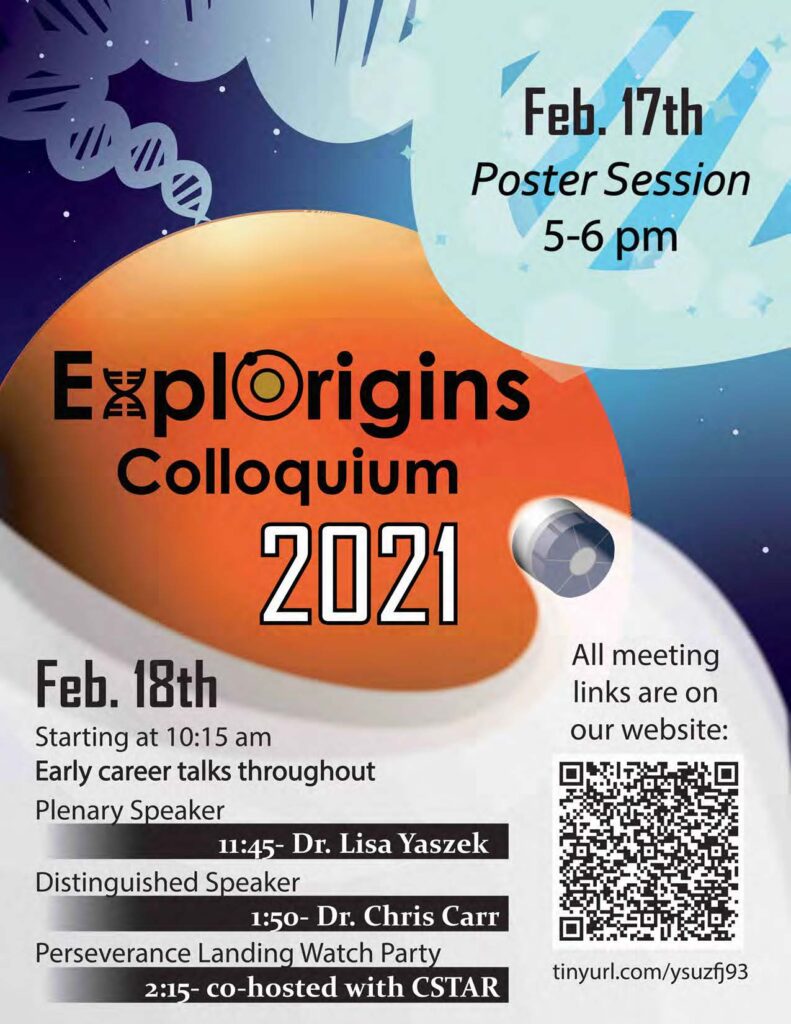Dear Astrobiology, Origins, and Space Enthusiasts,
The ExplOrigins early career group invites you to join the 2025 Exploration and Origins Colloquium! This colloquium will have events on two days: a poster session & social on March 6th (4:30-8pm) and talks on March 7th. We are thrilled to feature plenary talks by Dr. Penelope Boston from NASA Ames and Dr. Tony G. Chen from Georgia Tech.
Talks and the poster session will be held in person at Georgia Tech, with a virtual viewing/presenting option for talks. Our aim is to highlight early career projects that explore, conceptualize, celebrate, and discover pieces of space, life’s origins, and astrobiology from any field in the Atlanta area. Through this colloquium, we hope to:
- forge relationships between diverse individuals of various fields, experience levels and backgrounds
- expand our internal awareness of local work and innovations
- encourage collaboration and interdisciplinary understanding
- provide a professional growth opportunity for early career individuals including undergraduates, graduates, and post-docs
General registration and abstract submission are through this form. All early career individuals (graduate students, postdocs, research scientists, and more) are highly encouraged to submit abstracts, due by the end of the day February 20th. To prepare your abstract you will need a title, author/affiliation list, and one descriptive paragraph. The announcement of selected speakers and poster presentations will be made on March 1st.
Thank you for your consideration. We hope to see you there!
Sincerely,
The Georgia Tech Astrobiology Fellows Abby Diering, Alivia Eng, Jelis Sostre Cortés and Chloe LeCates

